Let me start by saying this Kalpeshwar temple isn’t the kind of place you stumble upon by accident. You don’t see it on every travel influencer’s Instagram feed. There are no luxury homestays with Wi-Fi and heated floors. No drone shots of crowds chanting aarti under the stars. And honestly? That’s exactly why I loved it.
I’d already done Kedarnath, Tungnath, and Madhyamaheshwar. I was ticking off the Panch Kedar temples like a checklist, but Kalpeshwar was the one that felt different from the start. Not because it’s harder or higher, but because it feels… untouched. Like a secret the mountains have been keeping for centuries.
And the best part? You start from a tiny village called Helang—just off the main road to Joshimath. No long drives through treacherous terrain. No last-minute cancellations because the road’s blocked. You literally park your vehicle near the road, step onto a trail, and just… begin.
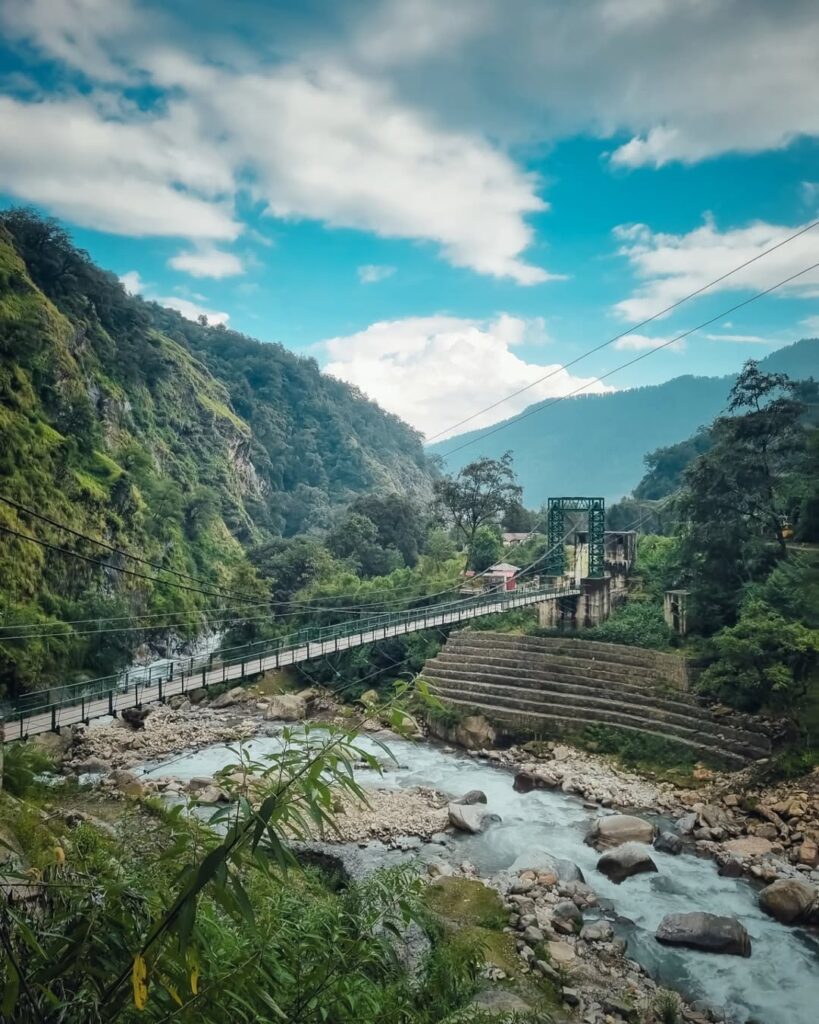
Why Kalpeshwar Feels Different
Most pilgrimages in the Himalayas are about grandeur. Big temples. Huge crowds. Long queues. But Kalpeshwar? It’s tucked inside a cave. A real cave. With moss-covered walls, dripping water, and a small Shiva lingam glowing softly in the dim light of oil lamps. There’s no roof. No doors. Just nature and devotion sharing the same space.
And that changes everything.
You don’t come here for spectacle. You come here because something pulls you—quietly, insistently—like a whisper in the wind.
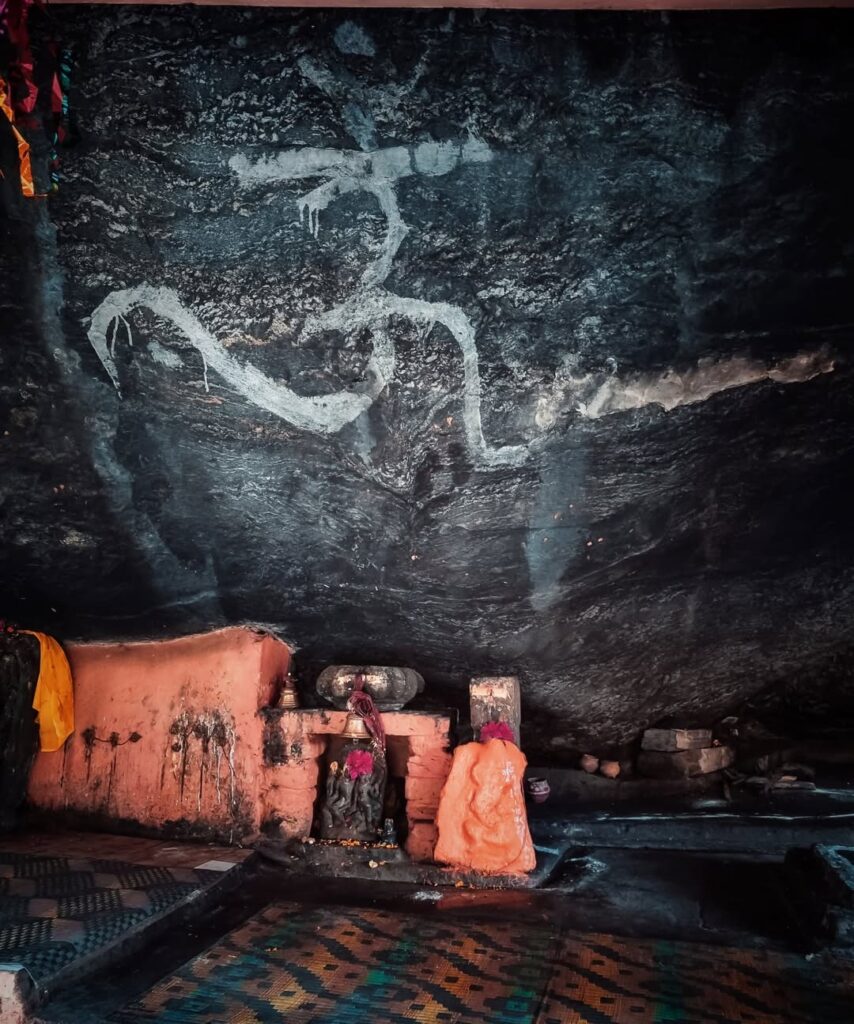
Getting to Helang: The Starting Point
Helang is a small village in the Chamoli district of Uttarakhand. It’s about 12 km from Joshimath on the Rishikesh–Badrinath highway. That means it’s actually accessible. You can drive your own car, take a shared jeep, or even hop off a bus if you’re on a tight budget.
I took a shared jeep from Joshimath early in the morning. It was packed—me, two pilgrims, a goat, and a woman carrying a sack of potatoes. No complaints. The ride was bumpy, the music was loud (90s Bollywood, of course), but the views? Unreal. Pine forests, terraced fields, snow-capped peaks in the distance.
We got dropped right at the trailhead. No fuss. No long walk to find the start. Just a sign that said “Kalpeshwar Trek – 5 km” and a narrow path winding into the forest.
And just like that, the city noise vanished.
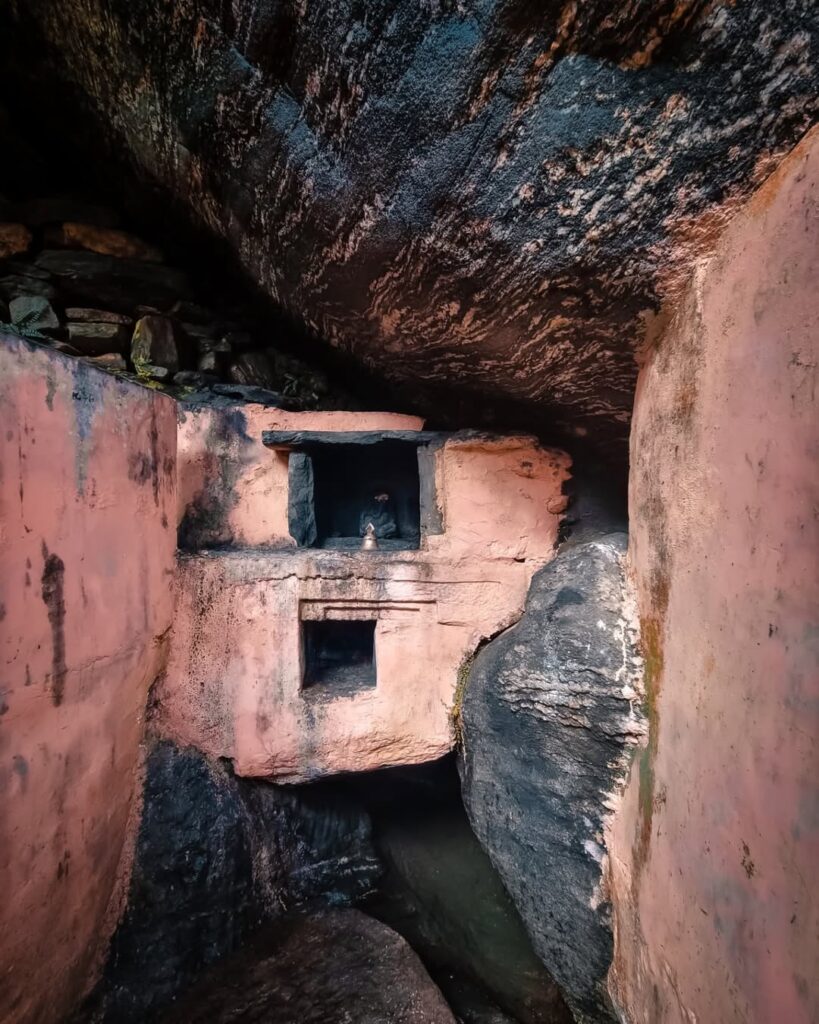
The Trek from Helang to Kalpeshwar: Walking Through Myth and Mist
The trail is about 5 kilometers one way. Doesn’t sound like much, right? But let me tell you—those 5 km feel like a journey through time.
It starts gently—through oak and rhododendron forests, across small wooden bridges, past grazing horses and the occasional cow blocking the path (seriously, cows have right of way up here). The air is cool, the scent of pine is everywhere, and the only sounds are birds, wind, and your own footsteps.
About halfway, you reach a place called Surya Kund. It’s a natural hot spring, believed to be blessed by the sun god. Pilgrims stop here to bathe before continuing. The water is warm, almost hot, and steams in the cool mountain air. I didn’t strip down (too cold and too many people), but I dipped my hands and feet. Felt like a mini reset.
The path keeps climbing, but it’s not brutal. It’s the kind of trek where you can actually enjoy walking. No gasping for breath, no panic about altitude. You’re at around 2,200 meters at Helang, and Kalpeshwar sits at about 1,700 meters—yes, it goes down in elevation. Which is rare for a Himalayan pilgrimage.
Wait, what?
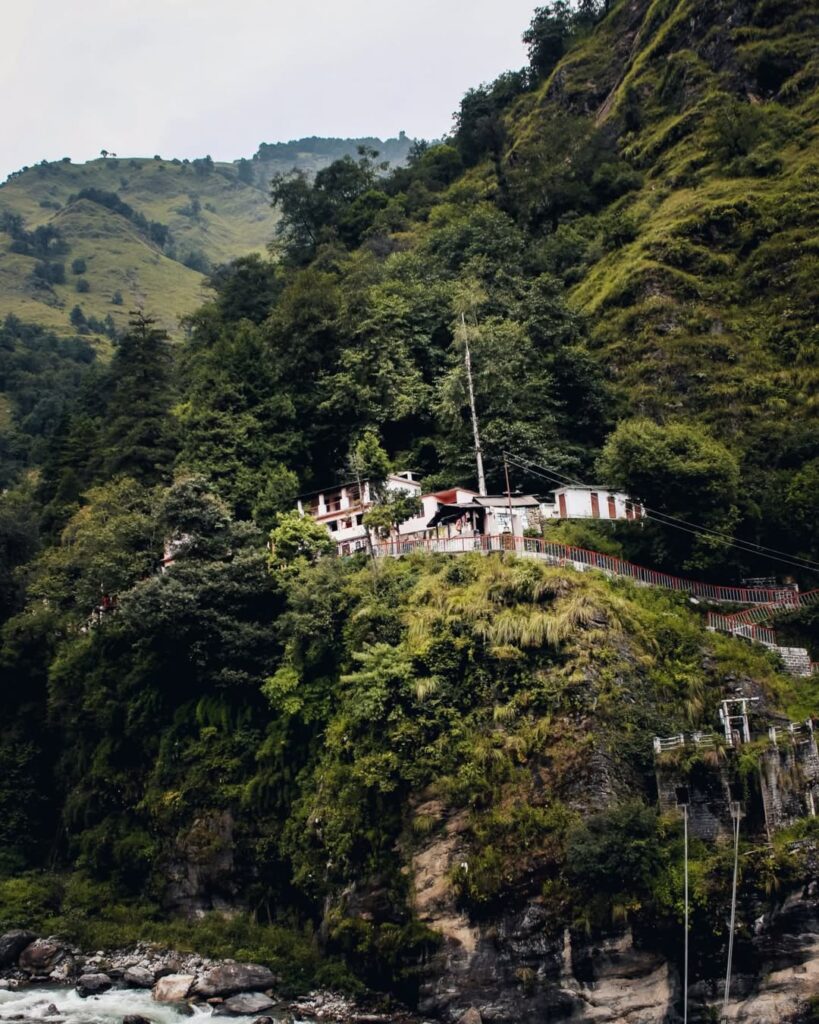
I know. Most treks go up. This one goes down. And honestly, I didn’t expect that. I was ready for thigh burn and altitude sickness. Instead, I got a peaceful descent through green meadows and forest clearings.
But don’t let the easy gradient fool you. This trek has its own kind of challenge—not physical, but emotional. Because the deeper you go, the quieter it gets. And in that silence, you start hearing things you usually don’t. Your thoughts. Your breath. The voice that’s been buried under months of deadlines and distractions.
The Legend Behind Kalpeshwar
Before I went, I read up on the Panch Kedar story. After the Mahabharata war, the Pandavas wanted to atone for the sins of killing their own kin. They sought Lord Shiva, but he didn’t want to grant them easy forgiveness. So he turned into a bull and disappeared into the ground.
His body parts reappeared in five different places:
- Kedarnath – Hump
- Tungnath – Arms
- Rudranath – Face
- Madhyamaheshwar – Navel
- Kalpeshwar – Hair (jata)
Yes. Kalpeshwar is where Shiva’s matted locks emerged from the earth. That’s why the temple is also called Jata Dhari, meaning “one who wears matted hair.”
And being inside that cave, seeing the lingam with strands of moss hanging like ancient hair from the ceiling? It’s eerie. Powerful. Like you’re standing where myth and reality blur.
There’s no idol here. Just a natural rock formation, shaped like a lingam, covered in flowers, tulsi leaves, and offerings. Oil lamps flicker. Water drips from the cave roof. The priest chants in a low voice. And you? You just stand there, feeling small in the best possible way.
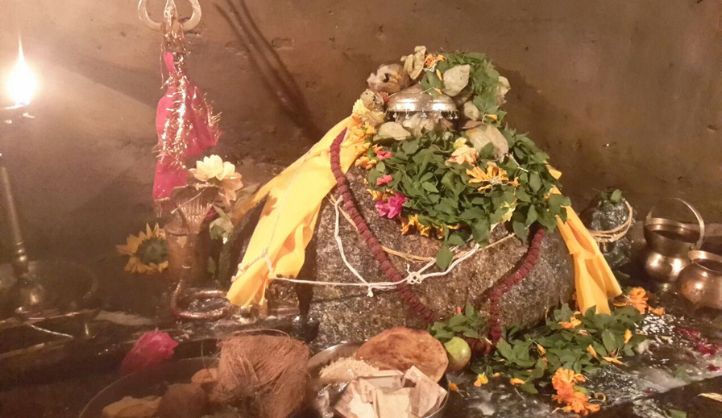
What Makes This Trek Special?
Let me list it out—because honestly, it’s the little things that stick with you.
✅ It’s peaceful. No crowds. No loud speakers. No rush. You can sit, pray, cry, or just breathe without being jostled.
✅ It’s accessible. Unlike other Panch Kedar treks that require days of walking or tough climbs, this one is doable for most people—even beginners.
✅ It’s spiritual without being overwhelming. You don’t need to be religious to feel something here. The energy is real, but gentle.
✅ The cave itself is magical. Natural formations, dripping water, soft light—it feels like stepping into another world.
✅ Local culture is alive. Villagers still live in the surrounding areas. Kids wave. Shepherds pass by with their flocks. Old men sit outside their homes, watching the world go by.
✅ No commercialization. No fancy cafes. No souvenir shops. Just raw, real mountain life.
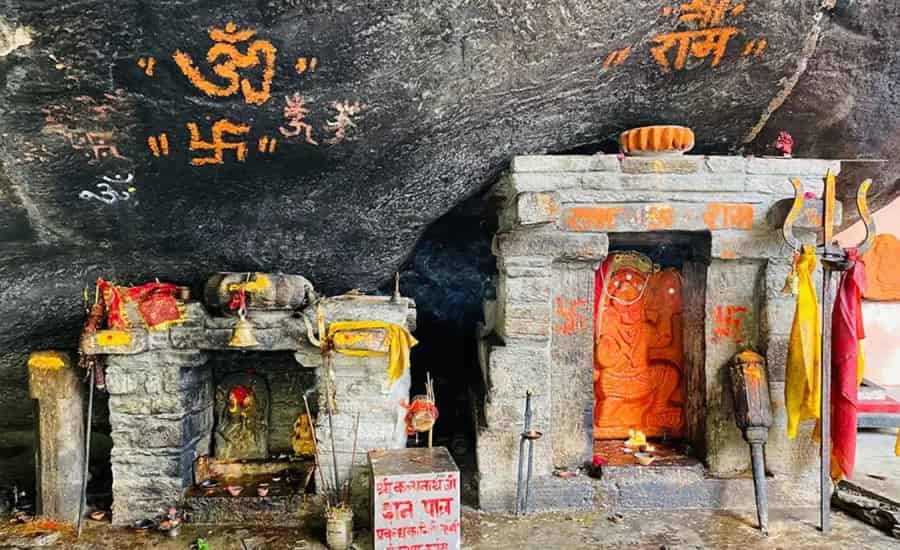
A Day-by-Day Breakdown (For First-Timers)
If you’re planning to go, here’s how it usually works:
Day 1: Travel to Helang
- Start from Rishikesh or Haridwar (8–10 hours by road)
- Stay overnight in Joshimath or drive straight to Helang if you’re arriving early
- Rest, eat local food (try the mandua ki roti), and prepare for the trek
Day 2: Helang to Kalpeshwar and back
- Start early (6–7 AM) to avoid afternoon clouds
- 5 km trek one way (3–4 hours down, 4–5 hours back up—yes, returning is harder)
- Spend 1–2 hours at the temple
- Return to Helang by late afternoon
- Stay overnight in a homestay or go back to Joshimath
Day 3: Return journey
- Head back to Rishikesh or Haridwar
- Or extend your trip to visit Badrinath or Auli
What to Pack for the Kalpeshwar Trek
You don’t need much, but the right gear makes a big difference.
🎒 Backpack – 20–30 liters, with a rain cover
🥾 Trekking shoes – Waterproof, good grip (the trail can be slippery, especially after rain)
🧥 Warm layers – Even in summer, mornings and evenings are cold
☔ Rain jacket – Sudden showers are common
💧 Water bottle – At least 1.5 liters capacity
🍫 Snacks – Dry fruits, energy bars, biscuits, chana
📱 Power bank – No electricity on the trail
🔦 Headlamp or torch – In case you return late
🩹 Basic first aid kit – Band-aids, painkillers, antiseptic
🧣 Scarf or muffler – For wind and dust
🧤 Gloves – Optional, but useful in winter
And yes—carry your trash back. There are no bins on the trail. Leave no trace.
Accommodation Options
There are no hotels in Helang. But that doesn’t mean you have to sleep under the stars.
🏡 Homestays – Simple, clean rooms in local homes. Basic bedding, shared bathrooms. Meals included.
🏕️ Guesthouses – Run by locals or trekking groups. Dorm-style or private rooms.
⛺ Camping – Some operators offer overnight camping, but it’s not common. Best for groups.
I stayed in a homestay run by a couple in their 60s. No Wi-Fi. No geyser. But the food? Unbelievable. Fresh dal, rice, roti, sabzi made from garden vegetables, and hot jaggery tea. I ate like I hadn’t eaten in weeks.
And the best part? We sat outside after dinner, wrapped in blankets, watching the stars. The Milky Way was visible. No light pollution. Just silence and sky.
The People You’ll Meet
One thing I didn’t expect was how much the locals would stay with me.
There’s a shepherd who walks the trail every week with his sheep. He doesn’t speak much Hindi, but he smiled and offered me buttermilk in a steel glass. It was sour, warm, and somehow perfect.
There’s an old woman who sits near the temple entrance, selling flowers and incense. She doesn’t charge much. Just enough to survive.
And the priest? He’s been there for 30 years. Lives in a small room behind the cave. Performs aarti twice a day. Doesn’t own much. But there’s a calmness about him—a deep peace.
These aren’t just people. They’re part of the experience. Part of why Kalpeshwar feels so real.
Best Time to Visit Kalpeshwar
Timing matters. Get it wrong, and you could be stuck in rain, snow, or landslides.
🌿 Best Season: Late May to October
- May–June: Post-winter, clear skies, blooming rhododendrons
- July–August: Monsoon. Lush greenery, but landslides possible. Not ideal.
- September–October: Post-monsoon, stable weather, cool temperatures, clear views
❄️ Winter (November–April):
- Trail often blocked by snow
- Helang accessible, but trek not recommended
- Extreme cold, especially at night
So if you’re planning, aim for May–June or September–October. That’s when the mountains are at their kindest.
Why Kalpeshwar Should Be on Your List
Let’s be real—most people skip Kalpeshwar. It’s not on the main pilgrimage route. It’s not as famous as Kedarnath. You can’t reach it by helicopter. And honestly, that’s its superpower.
This isn’t a trek for the ego. It’s not about checking a box or posting a selfie with a temple in the background.
It’s for the ones who want to feel something.
Who want to walk through a forest so quiet you can hear your heartbeat.
Who want to stand in a cave where the air feels sacred.
Who want to remember what it’s like to be small in a vast, beautiful world.
And if you’re someone who’s tired of the noise—the constant pings, the rush, the pressure—then Kalpeshwar might just be what you need.
Tips for a Smooth Trek
Here are a few things I learned the hard way:
✔️ Start early. The trail is best in the morning light.
✔️ Wear good shoes. Slippery rocks and mud are real.
✔️ Carry cash. No ATMs, no digital payments in Helang.
✔️ Respect the temple. No shoes inside the cave. Dress modestly.
✔️ Don’t rush. This isn’t a race. Take breaks. Enjoy the views.
✔️ Talk to locals. They’ll share stories no guidebook has.
✔️ Stay hydrated. Drink water regularly, even if you don’t feel thirsty.
✔️ Go slow on the return. Climbing back up is tougher than it looks.
✔️ Take only memories, leave only footprints.
✔️ Be open. This trek isn’t just about the destination—it’s about what happens inside you along the way.
Final Thoughts: Why Kalpeshwar Stays With You
I’ve been back for weeks now. Back to emails, traffic, and the never-ending to-do list.
But sometimes, when I close my eyes, I’m back in that cave.
The flicker of the oil lamp.
The sound of water dripping from the ceiling.
The way the moss hung like ancient hair from the stone.
The silence.
Not empty silence. Full silence. The kind that holds something sacred.
Kalpeshwar isn’t the most famous of the Panch Kedar temples.
But it might be the most honest.
It doesn’t try to impress you.
It just is.
And sometimes, that’s exactly what we need.
10 FAQs on Kalpeshwar Temple
Q1. Where is Kalpeshwar Temple located?
Kalpeshwar Temple is situated in the Urgam Valley, Chamoli district, Uttarakhand.
Q2. Why is Kalpeshwar Temple famous?
It is part of the Panch Kedar temples and the only one open all year, where Lord Shiva is worshipped in his Jata (matted hair) form.
Q3. What is the best time to visit Kalpeshwar Temple?
Although open year-round, the best time is from April to November when the weather is pleasant.
Q4. How to reach Kalpeshwar Temple?
You can drive till Helang on the Rishikesh–Badrinath highway, then trek around 10 km via Urgam to reach the temple.
Q5. How difficult is the Kalpeshwar trek?
The trek is relatively easy compared to other Panch Kedar temples, passing through scenic villages and forests.
Q6. What is the altitude of Kalpeshwar Temple?
Kalpeshwar is located at an altitude of about 2,200 meters (7,217 ft).
Q7. What is the mythological story behind Kalpeshwar Temple?
It is believed to be the place where the hair (jata) of Lord Shiva appeared after he disappeared from the Pandavas.
Q8. Is Kalpeshwar Temple connected with Char Dham Yatra?
Not directly, but pilgrims often combine Panch Kedar and Char Dham for a complete spiritual journey.
Q9. Are accommodations available near Kalpeshwar Temple?
Yes, basic guesthouses and homestays are available in Urgam and nearby villages.
Q10. Can I visit Kalpeshwar Temple in winter?
Yes, Kalpeshwar is the only Panch Kedar temple that remains open during winters as well.


